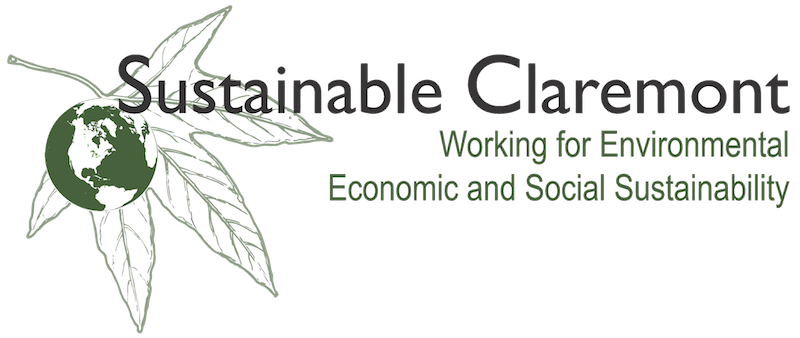Look northward from the center of Claremont and the closest mountain you’ll see, just above the Claremont Hills Wilderness Park, is Sunset Ridge. This is the southern boundary of the San Dimas Experimental Forest, managed by the U.S. Forest Service. The SDEF covers 17,000 acres of rugged territory bounded on the north by Glendora Ridge Road, on the east by Sunset Ridge, above Mt. Baldy Road, and on the west by Little Dalton Canyon, above Glendora. Few Claremonters are aware of this place; fewer still have been there.
The SDEF is closed to the public except by prior arrangement for research or educational purposes. It was established in 1933 as a field laboratory for studies on chaparral and related ecosystems. It is called San Dimas after its main watershed, San Dimas Creek. Elevations range from 1,500 to 5,500 feet. Vegetation is typical of Southern California mountains: chaparral and coastal sage scrub in lower reaches, streamside woodland in the canyons, and conifers on higher ridges.
Recently I organized the second in a series of field trips to the SDEF for Claremont Colleges faculty and leaders of local civic groups. Those on both trips were impressed by its mainly unrealized potential for research and learning in a setting that is nearby but seems a world apart. Our Forest Service hosts are eager to cooperate with us.
This is a special place from the standpoint of scientific research. Because of its protected status and ruggedness, most of the SDEF has a relatively high degree of ecological integrity for an area next to a metropolitan region. And it is a laboratory for understanding and managing the “wildland-urban interface” in Mediterranean-type climates such as ours, including dealing with the extreme heat, wildfires, heavy rainstorms, and flooding expected to increase with climate change.
Another thing makes it special, really a treasure. The SDEF has extensive files going back over 80 years. These include results of studies carried out by government and academic researchers, as well as detailed records on weather, erosion, native and invasive plants, resident and migratory birdlife, air pollution, and behavior and effects of wildfire. Researchers can draw on this information, build on it, and contribute to long-term studies.
The SDEF’s current administrative situation offers challenges as well as opportunities. It has been included within the new 346,000-acre San Gabriel Mountains National Monument, which is superimposed on part of the 700,000-acre Angeles National Forest. This is probably not a good idea, because it implies that the SDEF could be opened to recreational use, something that shouldn’t happen. In addition, although it has always been within the boundaries of Angeles National Forest, the SDEF is managed not by the national forest, headquartered in Arcadia, but by the research arm of the U.S. Forest Service, specifically the Pacific Southwest Research Station based in Albany, in the San Francisco Bay Area.
Finally, the SDEF is a Biosphere Reserve. Biosphere Reserves are set up by governments of countries and recognized by UNESCO, the United Nations Educational, Scientific, and Cultural Organization. They are meant to be sites of excellence where innovative ways of managing natural resources and promoting sustainability can be tested and demonstrated, with results shared through a network that now includes 632 locations in 119 countries. (Biosphere Reserves shouldn’t be confused with World Heritage Sites, another UNESCO program that designates cultural or natural places for their “outstanding universal value.”)
The SDEF is one of 47 Biosphere Reserves in the United States. However, the U.S. program has been dormant since the late 1990s as the result of a well-organized campaign that promoted the nonsensical notion that the United Nations was using Biosphere Reserves to take control of public and private lands in the United States. I’m part of a group working with federal officials to revive the U.S. program. If this happens, as I expect it will, it will add to the SDEF’s value.
Right now, the SDEF gets limited use. Better ways are needed to make it available for college-level courses and research projects, as well as group visits for high school students and the public. (A permit is needed to enter the SDEF and these are generally issued only for research and educational purposes. Contact information is listed at www.fs.fed.us/psw/ef/san_dimas.)
Our mountains are part of Claremont’s heritage. We certainly need to protect natural areas within the city, including the Wilderness Park and the Bernard Field Station, but our concern should extend to places beyond the city limits, including the San Dimas Experimental Forest. Decisions are being made that will affect them for many years to come.
Demystifying Sustainability is an initiative of Sustainable Claremont (sustainableclaremont.org).

Join the discussion One Comment